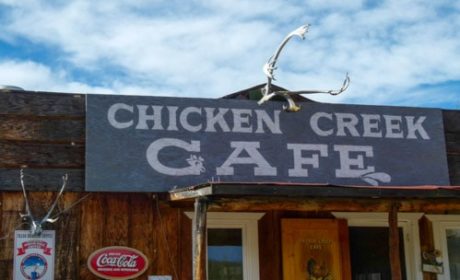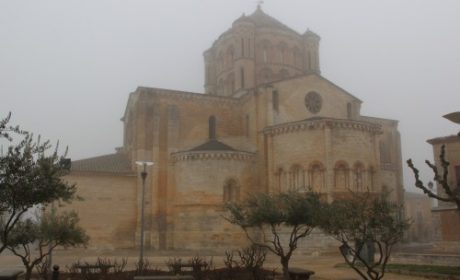Will you discover modern Morocco on your trip to Granada, Spain? Yes!
Along with most European countries, exploring the best of Spain means encountering endless traces of history that have made the country what it is today. However, Granada, Spain, certainly stands out for its many modern customs that pay respect to the region’s Moorish past.
Guest contributor, Naomi Elster, takes us on a visit to the city’s famed “teterías,” teahouses that still retain the old traditions of the Moorish culture.
Tea is everywhere in Andalucía; it’s just a little different. When even run-of-the-mill bars and cafés in Andalucía have extensive tea menus, you might think you’ll always be able to get what you want – but the English breakfast tea many of us simply think of as, ‘tea’ can be difficult to find.
When a friend decided she wanted a traditional cup of tea in a medium-sized Andalucían town, we scoured the menu and eventually decided that a Pakistani ‘black tea’ was the closest we were going to get.
My friend asked me to ask the waiter ‘to make it with milk’ and without thinking, I translated her request literally. A teabag flouting in a glass of milk that had been heated in a microwave arrived at our table. My friend drank coffee for the rest of her trip.
Table of Contents
Finding modern Morocco in Granada, Spain

Familiar, European features and more exotic Arabic ones exist side-by-side in Andalucía. Sometimes it’s easy to forget that the distance across the sea to North Africa is much less than distances over land from most of the continent Spain is geographically, culturally and politically part of.
Historically, this province has been shunted between the rule of Catholic monarchs and Islamic tribes predominantly from the North African region that the modern world knows as Algeria and Morocco, known collectively as Moors, who ruled much of Iberia until approximately the fifteenth century.
The city of Granada was their very last stronghold, and, as I discovered when I visited, Morocco’s influence here didn’t end with the defeat of their tribesmen in the 15th century.

Granada is world-famous for the UNESCO world heritage site the Alhambra – literally, “the red one” or “red palace,” an ancient Moorish stronghold which towers over the city in a complex home to plenty of other monuments.
The Palacio de Carlos V, a less dramatic and decidedly more European fifteenth century add-on, was built by a Catholic king to make the point that the Moors were no longer the ruling force.
The fortress of the Alcazaba is possibly one of the most militaristic buildings in Granada. It was from here that the Spanish flag was first flown when the Moors were driven from the city in the 1400’s.
Hate waiting in line? Purchase your skip the line Alhambra tour here.
When you come down from the Alhambra, the city of Granada itself is buzzing and vibrant – even in the winter, fiery flamenco performances are common in the street, and I spent hours on my recent visit simply sitting in the sun watching such performances.
Those of us who like grand cathedrals and narrow, pretty streets will certainly get our fix here. But for me, the most enthralling part of Granada was the neighbourhood of the Albaicín, the old Arab quarter at the foothills of the Alhambra.
Old Arab Quarter, Modern Arabic Influence

The narrow streets of the Albaicín were once home to about thirty mosques, and forty thousand people. When the city was reconquered by Catholic Spain, this neighbourhood was set aside for the remaining Arab Muslim population to live in and the area is sometimes referred to colloquially as “Little Morocco”.
This is more in reference to modern Moroccans, who are the most important immigrant workforce here, with 20% of the 3.5 million Moroccans in Europe thought to reside in Spain. Granada is geographically close, and some scholars have suggested that many Moroccan immigrants view themselves as having a legitimate right to “return” to the city that their ancestors, who in many ways did shape the city, were driven from.
The majority of the souvenir shops here offer fantastic bargains on exotic goods brought from Morocco (and occasionally India). Although not cheap by Spanish standards, prices are low compared to most of Northern and Western Europe.
Bright skirts and baggy trousers hung on outside walls ruffle with the breeze, with the inside of many shops full of the heady scent of incense and real leather. Colored tea glasses decorated with gold and silver overlay patterns are also common, and those who fancy it can pay $4 in the street to have their name written in Arabic calligraphy.
The leather is where the real bargains are to be had. There are usually options from around twenty euro to upwards of a hundred, depending on the leather itself, the style, and the size (the $21 options were real leather, but very small and simple).
Being a writer and a keen reader, I fell in love with a bag that looked like an old, leather-bound book (and which was large enough to take an A4 pad to boot!) It was mine for $32.
Although I was told you can haggle, my natural (and I suspect at times expensive!) reserve kicked in and I didn’t. In addition to my bag, I purchased a set of six colorful tea glasses, and the shopkeeper opened the box and offered to let me swap any color not to my fancy for another one.
You won’t find it difficult to pick up stained glass lamps and ornaments, small items of furniture, mirrored boxes and jewelry here. Many shops sell imitation leather in addition to the real thing; if real leather is what you want, ask for it, and also smell it (leather that hasn’t been processed properly has a stink that will never leave it).
The best shops are along the Caldereria Nueva street, or in the The Alcaicería neighborhood, which was home to Granada’s original bazaar until, ironically in the eighteenth century, a factory making matches itself ignited, sending the bazaar up in smoke along with it.
Boomer Travel Tip
Planning a trip to Spain? Start with our Spain Travel Planner.
Tapas, Tapas, Tapas….Tangine?

As a teacher of English as a second language, I’ve often had to explain that there isn’t really an English equivalent of Bon Appetit. Plenty of native EFL teachers and students from cultures more celebrated for their food put this linguistic oversight down to the blandness of British food. But what Britons often don’t realize until we spend extended times abroad is how wonderfully diverse our own gastro-culture is.
Spanish food has a lot going for it. Full-bodied red wines from regions like La Rioja and Ribera serve as both an ingredient and an accompaniment. Unsurprisingly for a country that had little wealth until recently, nothing is wasted when an animal is used for food.
Although “onions in blood” (similar to black pudding) may not sound appetizing any more than the oft-seen slight mistranslation of Albondigas to “balls meat”, there’s an enormous variety of delicious meat dishes on offer, from stewed meats that are so tender they seem to melt in your mouth to salamis that will give your facial muscles a workout your tastebuds will be grateful for.
Vegetarians need not despair however; cold soups like Salmorejo are popular for a reason, and vegetable dishes taste so fresh you imagine the ingredients might still have been in the ground when you placed your order.
But sometimes, you want something different, and that’s often not on offer. Even getting hold of foreign spices and ingredients to cook at home can be challenging in medium-sized towns, making the range of middle-Eastern restaurants and kebab shops in Granada a breath of fresh, spice-scented, air.
Tagine, slow-cooked spicy stews named after the earthenware pot in which they are prepared, are common, as are hummus, falafel, and schwarma. It’s also well worth knowing about the Grenadian custom of providing generous portions of free tapas with drinks (although you often don’t get to choose the free tapa). I’ve paid for two drinks and discovered I’ve eaten so well I no longer need dinner.
The quirky Babel Bar is possibly one of my favourite restaurants in Spain, with an interesting burger and tapas menu, and a board from which you can select your free tapa, while Tagine Elvira is often recommended as one of the best middle-Eastern restaurants in town. Calle Elvira is a good place to look for some of the city’s best food.
“La Calle de Teterías”

Tea in England is simple. Tea in Southern Spain less so. In major cities you can see tea being sold in shops and street stalls by the leaf, a feast for all the senses, with exotic names and descriptions of the different herbs and voices in each infusion artistically handwritten on a cardboard label. One of the main attractions and quirks of Granada is its teterías, Arabic style tea-rooms.
Stepping into a tetería feels like stepping into a tale straight from The Arabian Nights. The outlandishness of the décor (think gilt, mirrors, candles and little natural light, underlaid by a subtle scent of incense) can at first be a little intimidating, if only because it’s so different you find yourself wondering, as you probably wouldn’t in a more standard café, how things work.

Generally, you have to wait to be seated, and if an English menu isn’t available, waiters in Granada’s busier spots are usually bilingual and will offer to help. Some useful words to know are té verde (green tea), té negro (black tea), té rojo (red tea) and the common base flavours of manzanilla (chamomile), tila (lime leaf) and menta (mint).
It’s generally waiter service; ask for la cuenta at the end and it will be brought, though you may have to settle it at the till on your way out.
Grenadian teterías are relaxed and informal, usually open late into the night, and people of all ages and from all walks of life gather to celebrate birthdays, share a quiet meal or pot of tea, or sit contemplatively alone after a long day taking in Granada’s spectacular sights.
Looking for more tips? Kirsten Gallagher shows us how to spend a weekend exploring Granada that includes flamenco and Arab baths.



